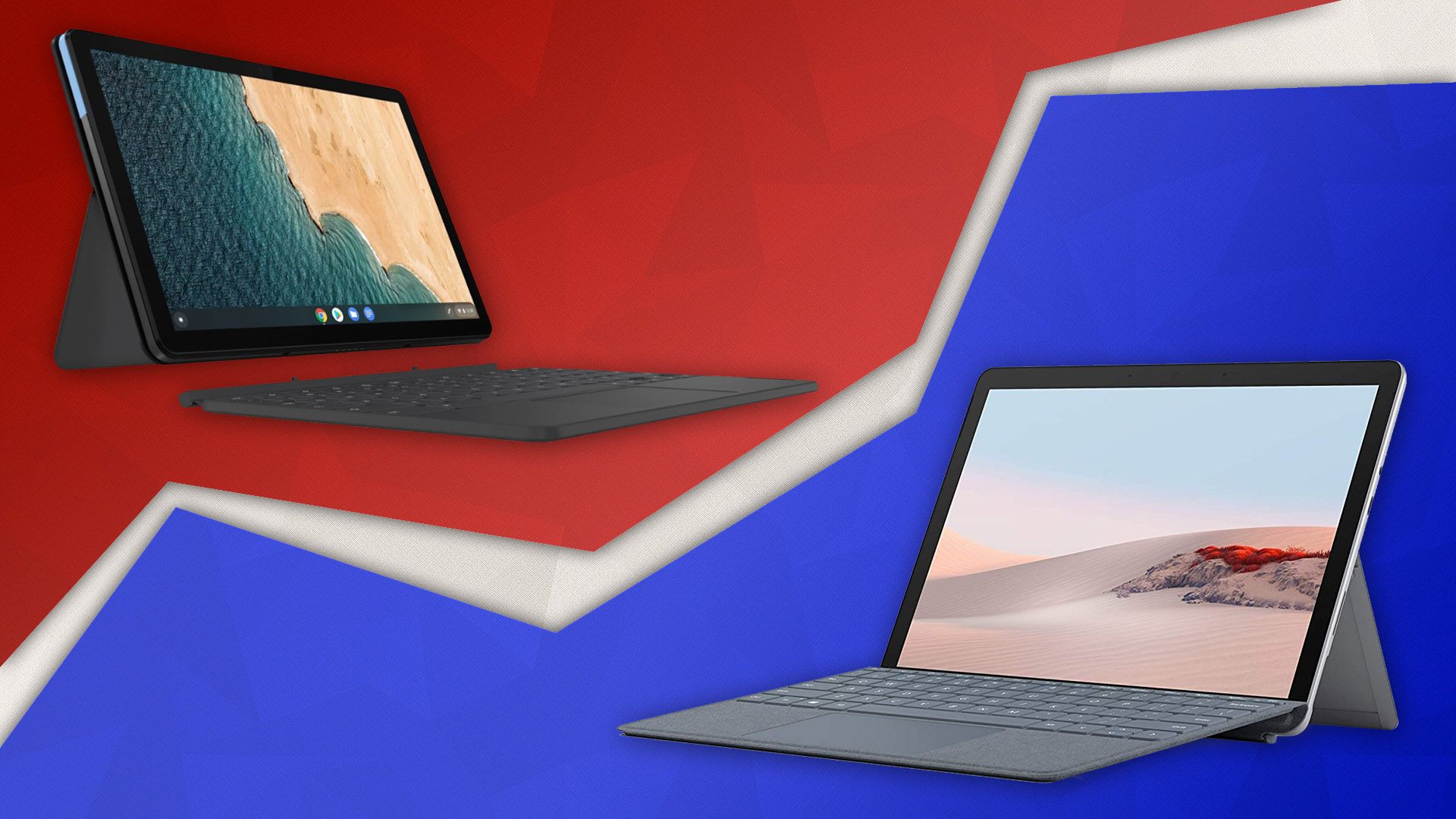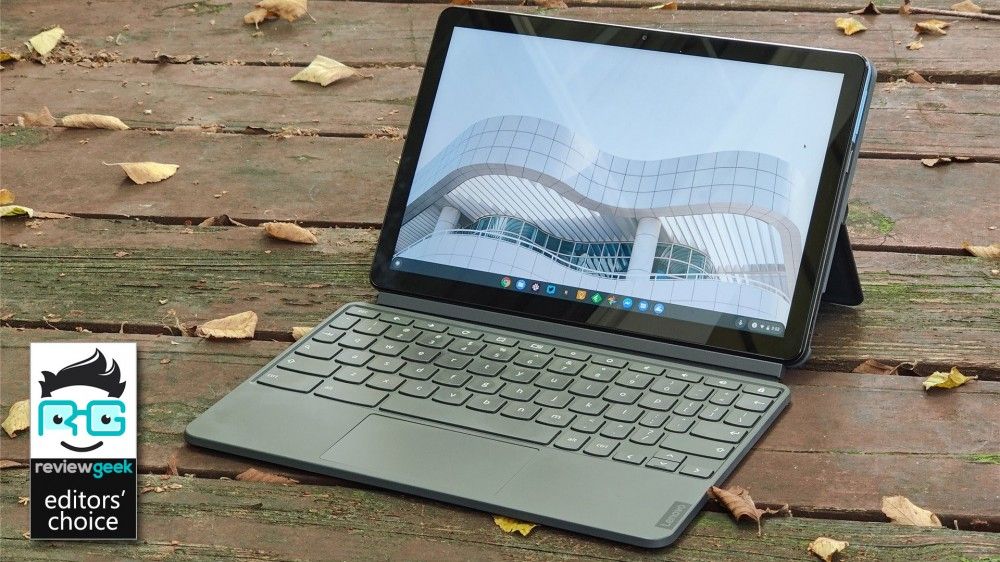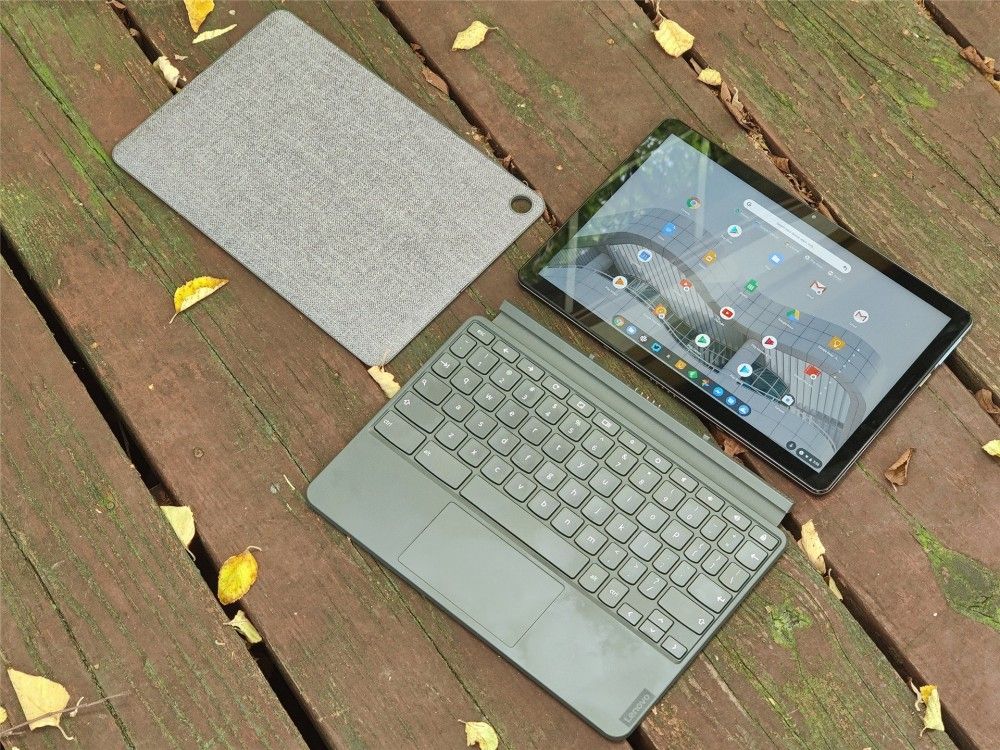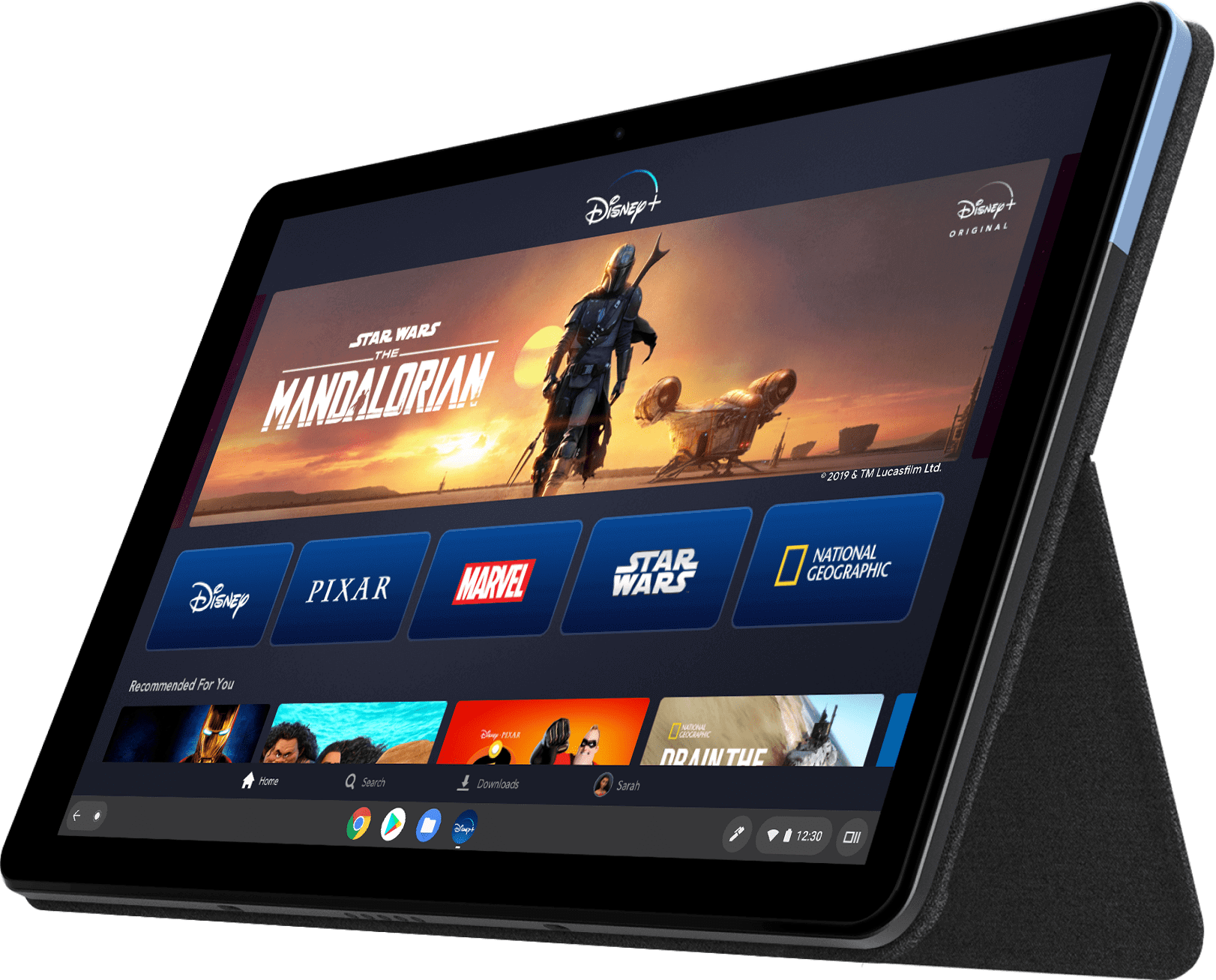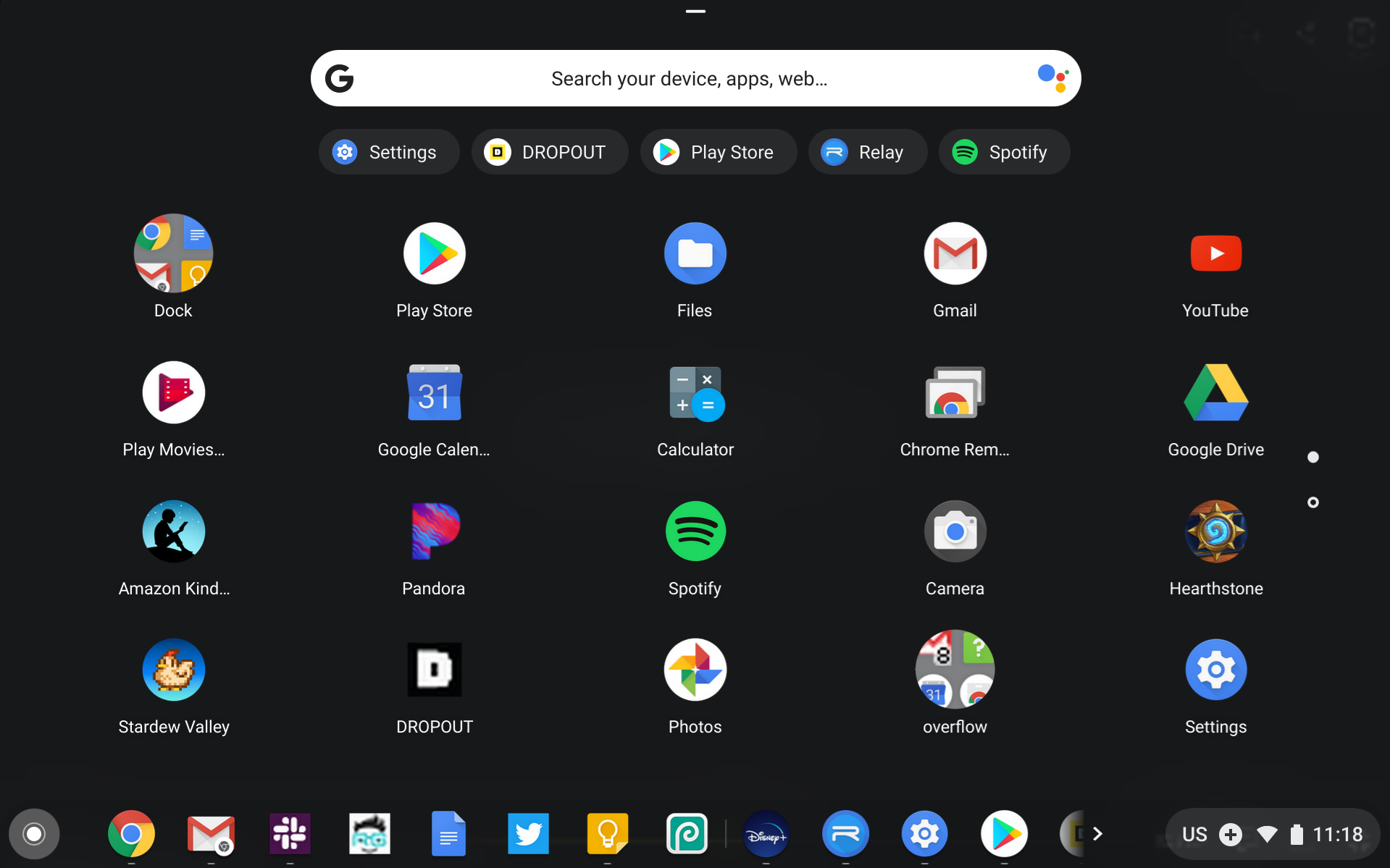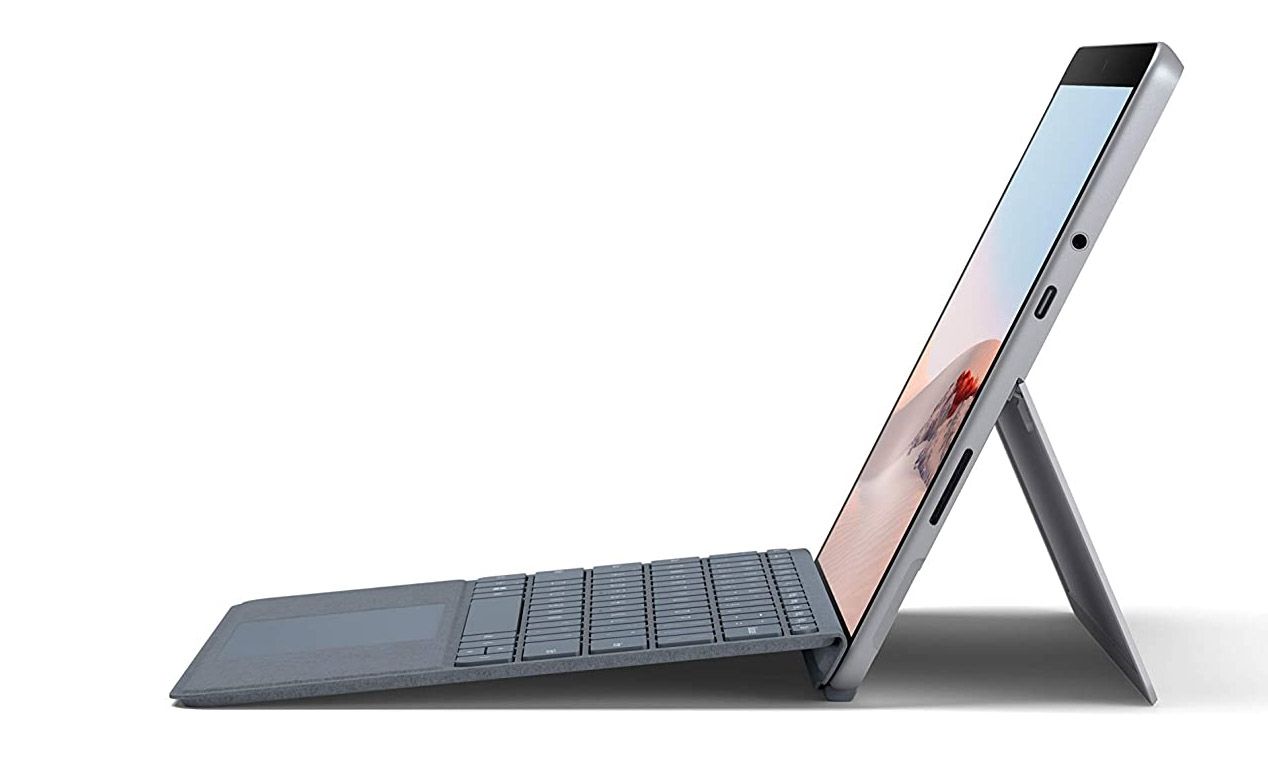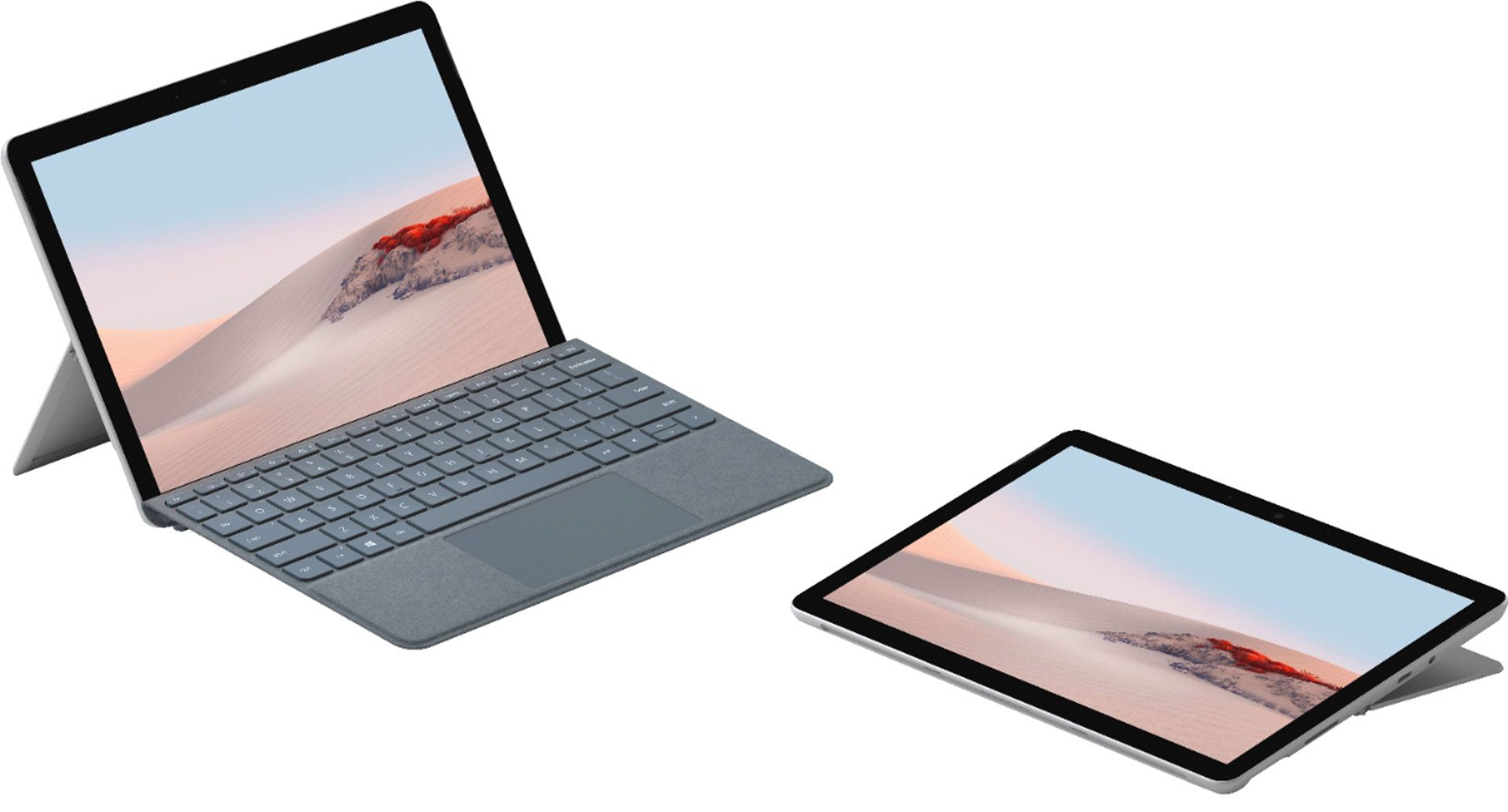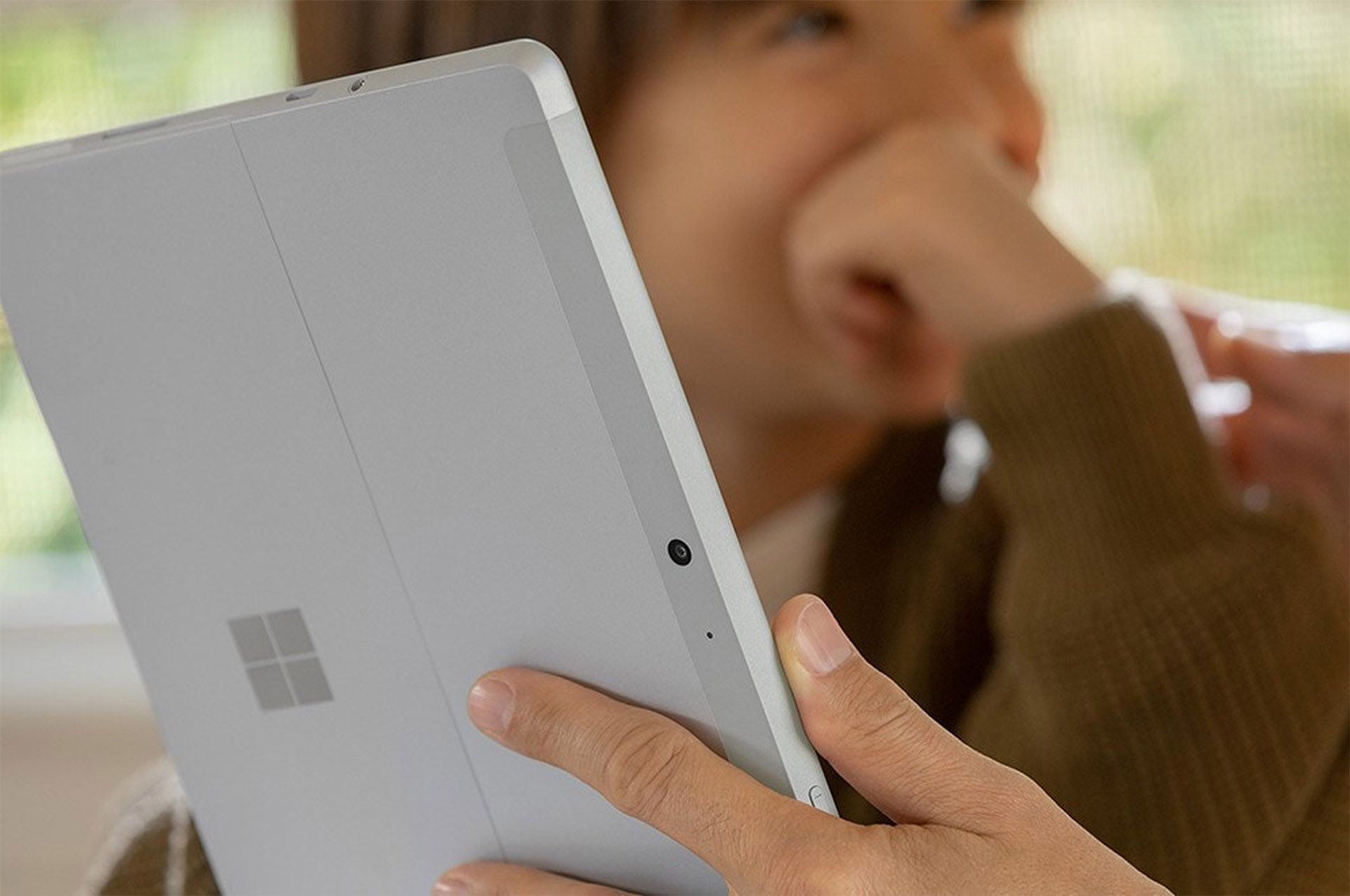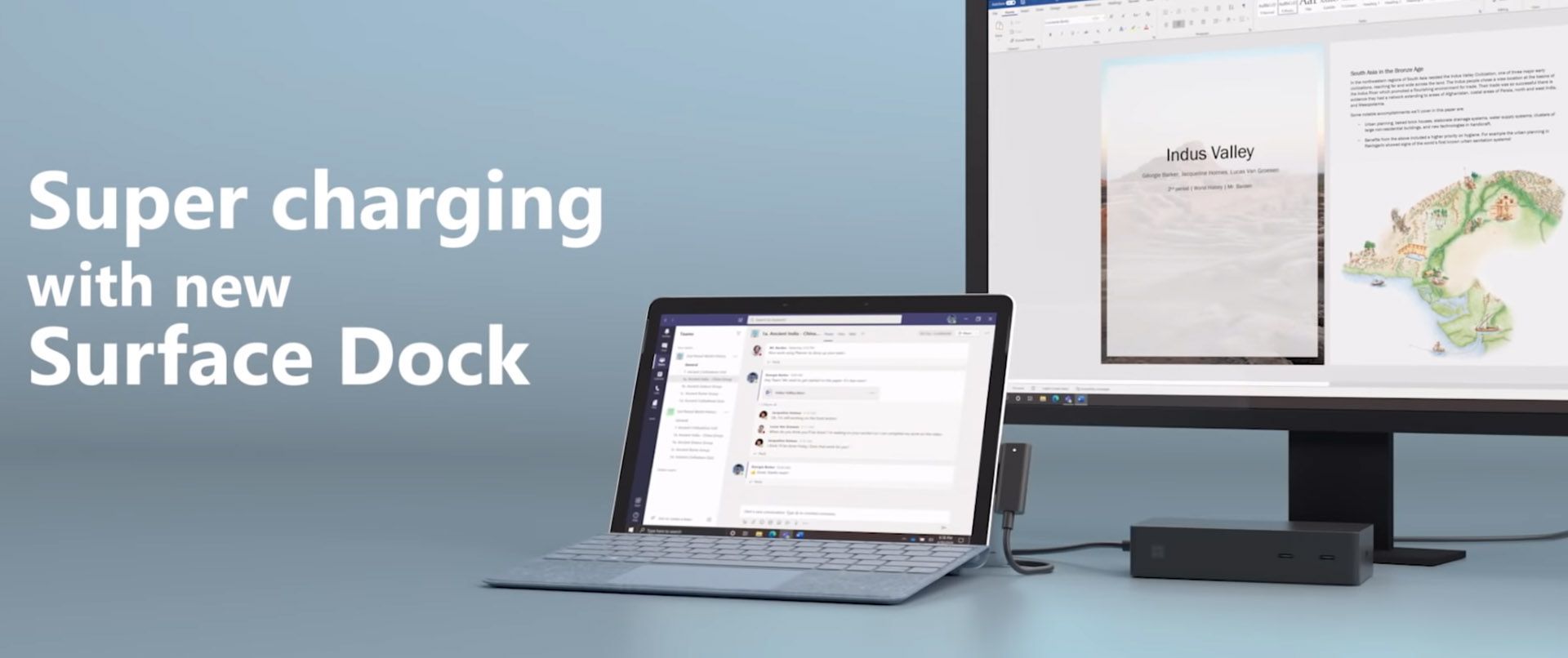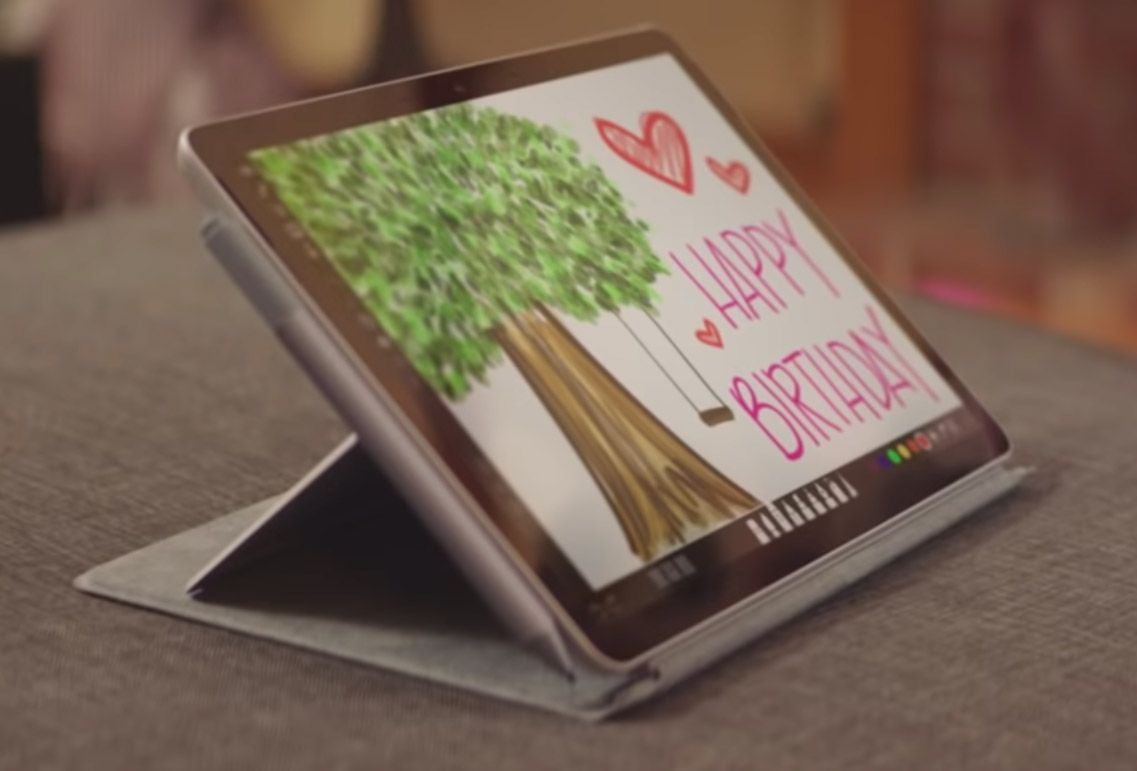Quick Links
So, you're in the market for a cheap, crazy-portable machine. One that works great as a tablet but can also handle "real" work like a laptop, typing emails and running desktop programs. The two most promising devices in this niche, at least ones under $500, are Microsoft's latest Surface Go tablet and Lenovo's new IdeaPad Chromebook Duet.
Both of these designs are 10-inch tablets with an integrated kickstand, and both pair well with small keyboard-touchpad covers designed specifically for them. The biggest difference is the operating system: the Surface Go 2 runs Windows, the Duet runs ChromeOS. And also Android. Sort of. It's complicated. There are also big differences in value, software, and hardware to consider.
IdeaPad Chromebook Duet: A Budget-Friendly Browser in a Box
Lenovo's budget take on a Chrome tablet wowed us when we checked it out at CES earlier this year, and Cam called it a nearly perfect ChromeOS device. It nails the combination device form factor in ways that much more expensive devices, like Google's own Pixel Slate, simply don't. The cloth-covered kickstand makes it look sort of like a Surface at a glance, but it snaps off the back via integrated magnets, revealing a super-thin 10-inch tablet underneath.
Value
The Duet comes with a keyboard in the box, an instant advantage over similar designs in terms of value. While the keyboard isn't exactly fantastic, it gets the job done and doubles as a screen protector when the tablet is in motion. If you want to go full touchscreen or just want to use a full-sized keyboard, it pops right off its POGO pins.
Even with the keyboard, the Duet has a starting retail price of $280. That's $120 cheaper than the cheapest Surface Go 2, which requires a separate $100 purchase if you want the keyboard. At only 60% of the price, assuming you want that keyboard and touchpad, the Duet is unbeatable in terms of value.
Hardware
But that lower price does come with a few sacrifices. The Duet uses a MediaTek ARM-based processor, the same kind of chip that powers mid-range smartphones, so it's definitely lacking in number-crunching oomph. For example, those low specs mean that it can only drive an external monitor at 1440x900 resolution. True, this sort of device isn't really meant to be paired with a monitor, but it's worth considering if you were hoping to do so.
Elsewhere in hardware, the Duet has just 4GB of RAM and 64GB of storage (or 128GB if you bump the price up to $300). That's plenty of memory and storage for a Chromebook, because almost everything that the operating system does is in the cloud. But you might find that the Duet starts to chug if you weigh it down with too many browser apps or tabs, and it won't be able to hold too many dense Android apps like games.
The Duet's screen is a 1920x1200 LCD that's serviceable without being mind-blowing. It's got an 8MP rear camera and 2MP front cam, though you're unlikely to use it for anything more intense than web conferencing.
In terms of I/O, it relies on just one USB-C port---that's for charging, external data, video, and audio. (In one of the tablet's only design failings, as there is no headphone jack.) You'll have to be conservative with your accessories, or buy a USB-C dock to use more than one at a time. But that low-powered ARM hardware does have a non-obvious perk: the tablet's battery lasts almost forever, and it can get a full slow recharge even on a phone brick.
ChromeOS
If you haven't used a Chromebook before, then open Chrome on your Windows or Mac computer. That's it. That's ChromeOS.
Okay, that's simplifying things a little, but it really is an operating system built around a browser. Though ChromeOS can do everything that Chrome can on a desktop, which probably includes more than you think, it's still limited in terms of expansion. A few offline apps like Gmail and Google Docs will keep you working when you don't have a Wi-Fi connection, but compared to the huge selection of Windows applications that Surface Go can run, it's a distinct disadvantage.
Howver, there is one ace in the hole for ChromeOS: Android apps. Like most new Chromebooks, the Duet comes with the Google Play Store preinstalled, and you can install most of the Android apps therein. Productivity apps, games, chat clients, whatever you want. It's a huge boon for a tablet to have built-in access to a million or so mobile apps.
Tablet Interface
Speaking of tablets, ChromeOS has made huge strides in the last year, improving its tablet interface (mostly by lifting elements straight from Apple's iPad). It's smooth and easily understandable, without losing access to the full-power tools of the Chrome Browser. Windows has gotten better on tablets lately, too, but the Duet is undeniably better at being a tablet than the Surface Go.
Microsoft Surface Go 2: As Small as Windows Should Ever Get
The Surface Go is the evolution of the device that Microsoft used to call just "Surface" (sans "Pro"). It's a smaller, cheaper, more portable machine, but it keeps the broad strokes the same as the popular Surface Pro, including that excellent keyboard, which is still a separate purchase.
Value
The Surface Go 2 costs $400 for the entry-level tablet, with an additional $100 for the cheapest keyboard/trackpad cover. Because we're comparing it to the Duet with the keyboard built-in, we'll assume that price is included in the retail price. So, $500 for the cheapest Surface Go 2, almost twice as much as the cheapest Duet.
But that extra price does get you an undeniably nicer machine. It's using a real Intel Pentium processor, which means it can run all Windows programs without virtualization. Upgraded models can boost that up to a Core i3 processor, and there's even a model with 8GB of RAM and LTE ... if you want to spend over $700. Because you're reading this article, you probably don't. But in terms of pure hardware flexibility and options, the Surface Go 2 can do more.
Hardware
It's also just a nicer machine. If you go for that keyboard cover, you'll find a better general typing and touchpad experience than on the cheaper Duet, with an extra bonus of backlit keys and the option to type at a comfy angle. When folded up for transport, the Surface Go 2 is thinner, more stable, and just more premium-feeling. The phrase "you get what you pay for" comes to mind.
The Surface is more expandable. The Surface line stubbornly sticks to a proprietary charging/dock port with a matching charge in the box, but the Surface Go 2 also has a USB-C port that can be used with a standard charger. The Surface Go 2 can handle multiple external displays at once---much more docking options than the Duet---though its integrated GPU might not be able to handle heavy stuff like 4K video. It has a built-in MicroSD card reader for easy and cheap storage expansion, and the icing on the cake: a dedicated headphone jack.
The Surface Go 2's screen is only slightly more high-res than the Duet, extending to 1920x1280 resolution for a more square-ish aspect ratio. But its contrast is generally reported as better, and the front-firing speakers make media consumption more pleasant.
Due to the more intense needs of Windows and a more powerful processor, it won't last as long on a charge, with most reviewers getting under five hours. It has an 8MP rear camera and a 5MP front-facing cam, which is compatible with the Windows Hello biometric system for login and security.
The base model Surface Go 2 has the same 4GB RAM and 64GB storage combo as the cheapest Duet. But that's a bit simplistic: Windows takes up a lot more memory and storage than ChromeOS, especially if you like to use ... wait for it ... the Chrome browser. I personally consider 8GB of RAM as the minimum for good performance on Windows 10, and that's a $150 upgrade for the Surface Go 2 (which STILL doesn't get you the keyboard). That upgrade also doubles the storage to 128GB.
Windows 10
You can get smaller devices than the Surface Go 2 that run Windows 10 ... but you really shouldn't. This size and resolution are where Windows starts to feel a little cramped, but you can still do most of the things you'd want to on the tablet. High-powered Windows games and media creation are out, but the Surface Go 2 should be able to handle Photoshop or high-end streaming video without issue.
Speaking of Photoshop: the big advantage that the Surface Go 2 has is the capability to run full desktop programs, including Chrome itself. If your business relies on a specific Windows application, or you have one that you simply don't want to replace with a web-based alternative, Microsoft's tablet is the way to go. Pardon the pun. With decades of Windows apps in its pocket, the software is definitely a big plus.
Because the Surface Go 2 can run Chrome, it can do all software tricks that the Duet can, except one: run native Android apps. (There are ways to get Android apps on Windows, but they're clunky, especially on low-powered hardware.) Microsoft has its own integrated Windows Store for apps, but frankly, it's mostly useless. Almost all the utility in the Surface Go 2 comes from access to traditional Windows programs.
Tablet Interface
Windows also isn't great as a tablet-based OS, it's merely "okay." You'll be able to do everything you need, but getting through Windows' various programs and settings menus without a mouse can be frustrating. If you want a device primarily for browsing the web or running mobile apps, this isn't it.
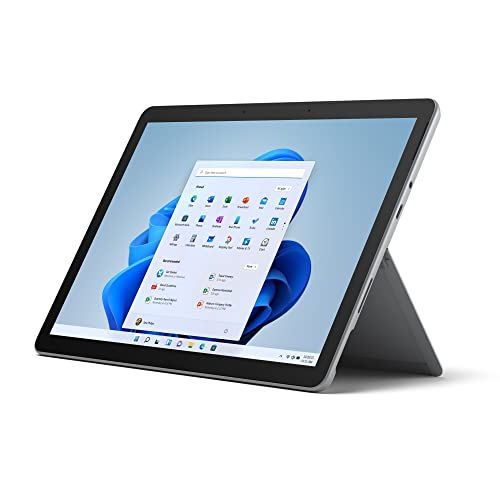
New Microsoft Surface Go 2 - 10.5" Touch-Screen - Intel Pentium - 4GB Memory - 64GB - Wifi - Platinum (Latest Model)
This smaller, sleeker version of the Surface tablet is a surprisingly powerful little device. It's just too bad that it starts at 8GB of RAM and doesn't include a keyboard in the box.
The Deciding Factors
Let's break this down into a lightning round. If you're still struggling to make a decision between the IdeaPad Chromebook Duet and the Surface Go 2, here are the quick hits:
- Hardware: The Surface Go 2 is more powerful, with more upgrades and storage options, along with a nicer fit and finish. There's also an LTE connection at the highest price point.
- Value: The Duet wins easily, with a keyboard included in its much cheaper price.
- Portability: With both tablets being about the same size and weight, the Surface Go 2 wins out if you're bringing along the type cover and kickstand for full "work mode." The Chromebook Duet is a little more flexible, though: with its kickstand removed it's much sleeker as a tablet alone. It can also last twice as long on a charge, and get back up to full battery from a low-power charger.
- Work mode: The Surface Go 2's high-quality backlit keyboard is better for when you want to treat the machine like a laptop. Access to all Windows programs might be the deciding factor for some buyers.
- Tablet mode: The Chromebook Duet's superior iPad-like tablet user interface and access to native Android apps make it the better choice if you're just browsing on the couch or on the go.
In general, I'd say that most buyers considering a cheaper tablet device will be better served by the Lenovo design. Its value and battery life are hard to beat, and access to Android apps in this form factor is a major plus. The Surface wins out if you absolutely must have Windows apps, or you need more expansion and storage---that MicroSD card slot can double or triple maximum capacity.

